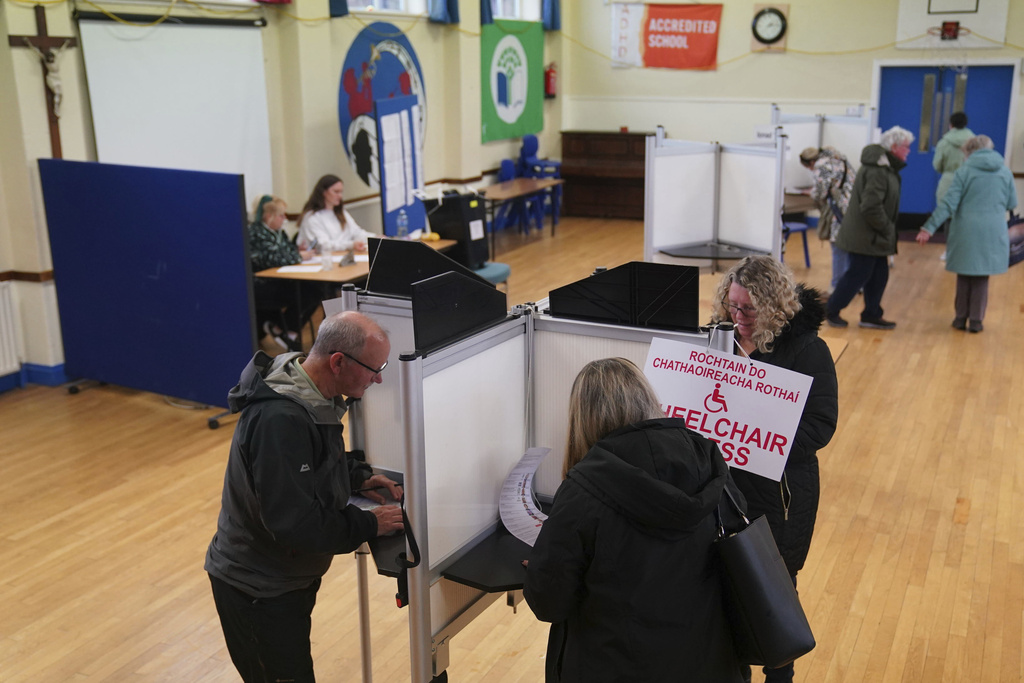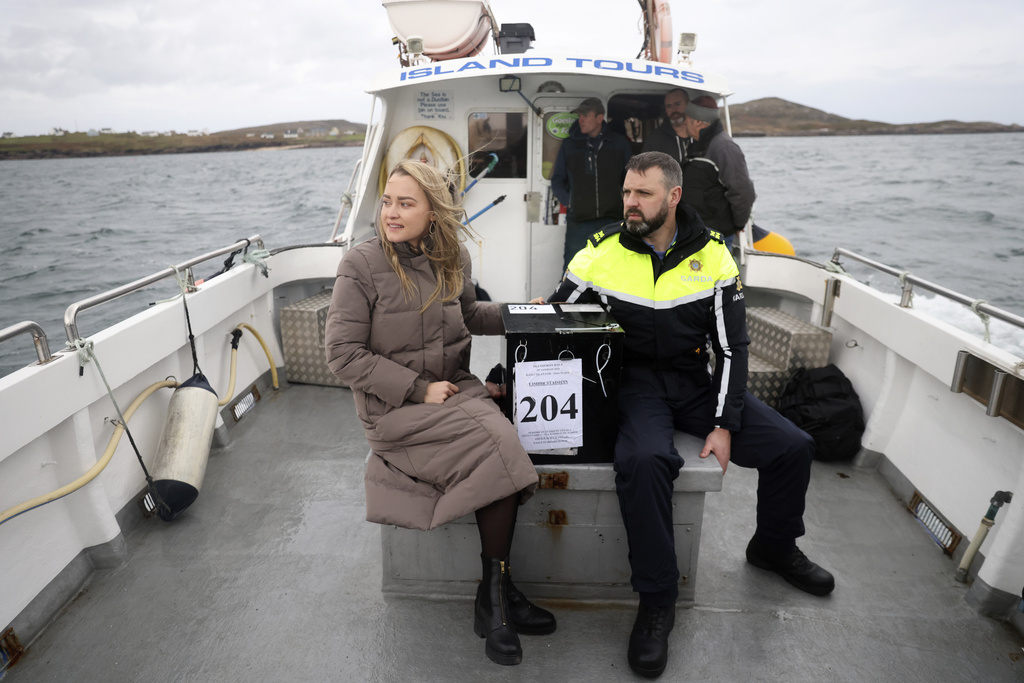Exit Poll in Ireland’s Election Signals Coalition Government Likely \ Newslooks \ Washington DC \ Mary Sidiqi \ Evening Edition \ An exit poll from Ireland’s parliamentary election suggests that Fine Gael, Sinn Fein, and Fianna Fail have garnered similar levels of voter support, likely leading to another coalition government. Housing shortages, cost-of-living pressures, and immigration dominated the campaign. While Sinn Fein could emerge as the largest party, its controversial history may limit coalition possibilities. Full election results will unfold over the coming days under Ireland’s proportional representation system.

Ireland’s Election and Its Implications: Quick Looks
- Exit Poll Results: Fine Gael, Sinn Fein, and Fianna Fail have similar shares of the vote, around 21%.
- Coalition Government Likely: With no outright majority, another coalition government is expected.
- Key Issues: Housing shortages, cost-of-living pressures, and immigration shaped the campaign.
- Sinn Fein’s Position: Sinn Fein may become the largest party but faces challenges forming a government.
- Complex Voting System: Proportional representation could delay final results for several days.
- Independents and Smaller Parties: Their role could prove decisive in determining the next coalition.
Deep Look
Exit Poll Suggests Divided Voter Preferences
The poll, conducted by Ipsos B&A and surveying over 5,000 voters, has a margin of error of 1.4 percentage points. While these figures provide an early glimpse into voter sentiment, the country’s proportional representation system means the final seat distribution will only become clear after days of ballot counting.
Who’s Running and Where Do They Stand?
Fine Gael and Fianna Fail: The Establishment Players
For over a century, Fine Gael and Fianna Fail have dominated Irish politics, with roots in opposing sides of Ireland’s 1920s civil war. Their policies are center-right and largely similar, but their rivalry remains a defining feature of Ireland’s political landscape.
Sinn Fein: The Disruptive Contender
Sinn Fein, a left-leaning party with aspirations to reunite Northern Ireland and the Republic of Ireland, has steadily grown in popularity. Its 2020 election performance was groundbreaking, but its exclusion from the coalition spotlighted longstanding skepticism toward its policies and past ties to the Irish Republican Army (IRA).
While Sinn Fein has sought to moderate its image, its pro-immigration stance and leftist policies have alienated some voters, particularly among its traditional working-class base.
Smaller Parties and Independents
What Are the Main Issues?
Housing and Cost of Living
The housing crisis remains Ireland’s most pressing issue. Years of underbuilding during and after the 2008 global financial crisis left the country with a severe shortage of homes. Rising rents, soaring property prices, and increasing homelessness have frustrated voters.
“There was not building during the crisis, and when the crisis receded, offices and hotels were built first,” said John-Mark McCafferty of Threshold, a housing and homelessness charity. Despite economic growth, the country struggles to address these deep-rooted deficits.
Immigration and Social Tensions
A stabbing incident outside a Dublin school last year further inflamed tensions, though Ireland lacks a significant far-right political party. Independent candidates with anti-immigrant platforms are vying for votes in this election, hoping to capitalize on public frustration.
What’s Likely to Happen Next?
The close race and fragmented vote suggest another coalition government is inevitable. Analysts believe Fine Gael and Fianna Fail will likely reunite to form a coalition, potentially with support from smaller parties or independents.
Sinn Fein, despite its potential to emerge as the largest party in the Dáil, Ireland’s lower house of parliament, faces an uphill battle in assembling a coalition. Both Fine Gael and Fianna Fail have historically ruled out working with Sinn Fein due to its policies and historical associations.
A Global Trend in Question
This election could challenge a global trend of incumbents being ousted in the wake of pandemic-era challenges, geopolitical instability, and cost-of-living crises. Whether Ireland’s ruling coalition survives or Sinn Fein seizes power, the results will shape the nation’s political and social landscape for years to come.







